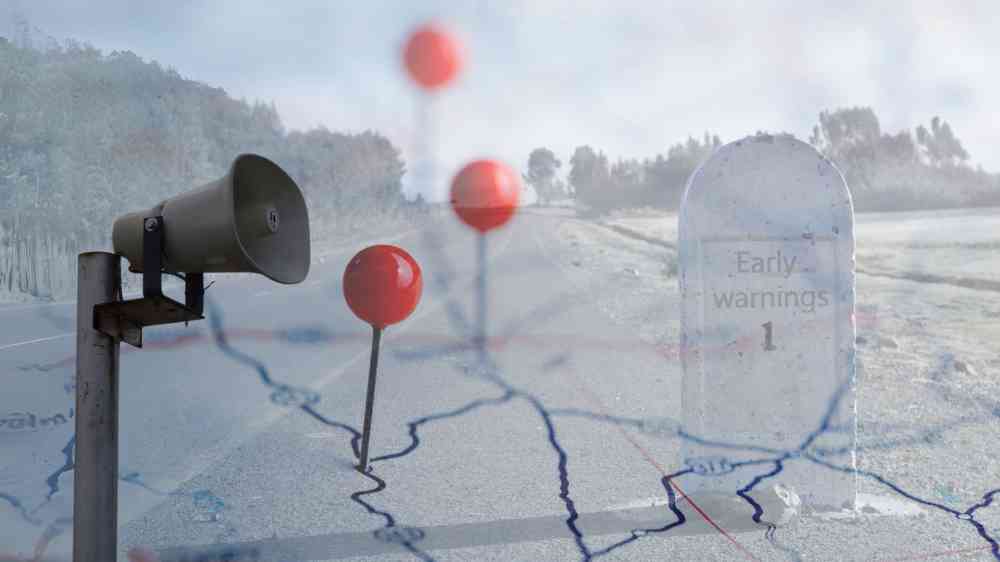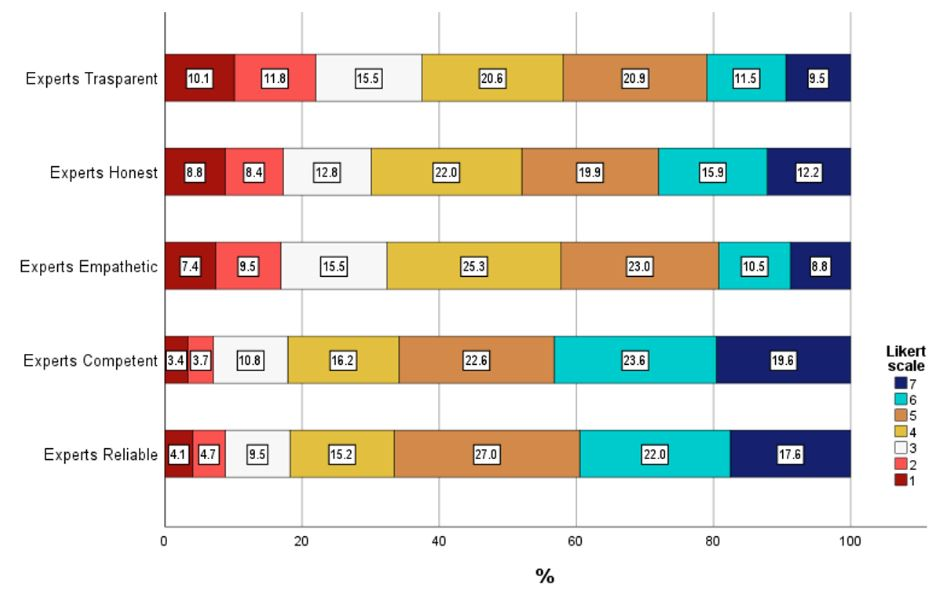Building disaster resilience through trust and risk awareness: Insights into natural hazards

Trust in institutions and scientific experts plays a pivotal role in Disaster Risk Reduction (DRR). This trust becomes even more critical for natural hazards-events often unpredictable and uncontrollable. Trust can shape individuals' willingness to heed warnings, adopt precautionary measures, and participate in community preparedness initiatives. Conversely, distrust in institutions may lead to non-compliance, scepticism toward scientific advice, and reduced community resilience. For example, In 2024, the Phlegraean Fields near Naples experienced heightened seismic activity. A civil protection evacuation exercise was conducted in June to prepare residents. However, participation was notably low due to deep-seated mistrust toward authorities. This distrust stems from historical events, such as the forced relocations following the 1980 Irpinia earthquake, which has left a lasting legacy of scepticism regarding government intentions. Low participation in such exercises undermines DRR preparedness, increasing the risk of cascading effects during future disasters.
Trust and risk perception: Foundational insights
Natural hazards present unique challenges that necessitate a trust-centric approach to DRR. For instance, effective early warning systems rely on public trust to ensure compliance with evacuation orders and other safety protocols. During events like flash floods or tsunamis, immediate action can significantly reduce casualties, but such compliance hinges on communities trusting the warnings and their sources. Similarly, community participation in preparedness activities, such as earthquake drills or wildfire evacuation simulations, depends heavily on trust in organising institutions. The Sendai Framework for Disaster Risk Reduction 2015-2030 (UNDRR) emphasises the importance of developing people-centred early warning systems through participatory processes that foster trust between communities and governments. It explicitly advocates tailoring these systems to users' needs, considering social and cultural requirements, including gender. Participatory initiatives aligned with this framework can help foster a sense of ownership and trust, enhancing community resilience. Transparent and consistent communication about risks and response measures is also vital, as misinformation can erode trust, especially during overlapping crises like the COVID-19 pandemic and concurrent disasters.
The web survey
Aimed at enhancing community resilience and fostering possible community preparedness in line with the Sendai Framework priorities, a comprehensive web survey to address the gaps in disaster preparedness and public trust, especially amidst rising global crises, was conducted from 14 September 2023 to 8 January 2024. The questionnaire, available in English, German, Italian, French, Tagalog and Hebrew, utilised a web-based platform and included 31 well-structured questions, divided into five thematic sections:
- Demographics: Personal and socio-economic characteristics of respondents.
- Risk Perception: Awareness and concern levels about specific hazards.
- Disaster Preparedness: Direct and indirect experiences, knowledge of emergency protocols, and risk awareness.
- Trust in Authorities and Experts: Assessment of trustworthiness and effectiveness of institutions and experts.
- Socio-Economic Context: as factors influencing resilience and vulnerability.
Questions included closed multiple-choice formats, likert scales, and open-ended options to capture nuanced perspectives. Data collection adhered to the General Data Protection Regulation (GDPR) guidelines, ensuring respondent anonymity and consent.
Key results
Most respondents were Italian and, more specifically, from the Campania region. This is reflected in the survey analysis of the results. However, the data analysis revealed significant findings. Trust in authorities such as civil protection agencies and fire services was positively correlated with higher levels of preparedness for natural hazards. Conversely, according to the analysis of the results, institutions perceived as less transparent or competent, such as governmental bodies, faced moderate to low trust levels, thus potentially affecting their ability to mobilise communities during emergencies. These insights highlight the necessity of building and maintaining trust to bridge risk perception and preparedness gaps.


The influence of trust on perception of natural hazards
Disasters often invoke a heightened sense of vulnerability, underscoring the role of trust in mitigating perceived risks. The web survey identified several trends:
- Risk awareness and preparedness: Earthquakes, flash floods, and wildfires emerged as primary concerns amongst respondents. Communities with higher trust in local authorities exhibited greater awareness of these hazards and preparedness to act during emergencies.
- Perceived competence of emergency responders: Institutions like fire services and civil protection units were highly trusted due to their visible competence and empathetic engagement during crises. This trust directly influenced public confidence in disaster response strategies and protocols.
- Trust erosion and its impact: In regions where governmental transparency or response efficiency was questioned, trust erosion correlated with lower preparedness levels, highlighting a critical area for policy intervention.
These findings underline the interplay between trust, risk perception, and preparedness, particularly for natural hazards, where timely and accurate information dissemination can save lives.
Recommendations for policymakers coming from the web survey data analysis
Establishing trust between authorities and communities is fundamental to effective Disaster Risk Management (DRM). The web survey underscored the vital role of trust in enhancing resilience, raising risk awareness, and improving community preparedness for potential natural hazards.
As such, from the data analysis, a detailed set of recommendations focused on building public trust, strengthening communication, and promoting collaboration among stakeholders was developed. A selection of key recommendations derived from the web survey data analysis is presented below.
Promote active participation. Engaging citizens in developing emergency guidelines by involving local communities in creating emergency response guidelines is essential to foster risk awareness and trust. Allocate resources for participatory and co-creation activities tailored to different population groups, ensuring that diverse voices are heard, which is essential.
Develop clear communication strategies by adopting a multi-level communication approach. During the data analysis, it came out that it is essential to provide transparent and accessible information about potential risks and appropriate responses to minimise the impact of misinformation, possibly considering different means of communication and implementing specific tools and strategies to combat misinformation through official channels to maintain public trust. Furthermore, customise communication strategies based on factors such as age, culture, education level, and personal vulnerabilities to ensure effective information dissemination. In addition, it is crucial to foster continuous communication, so maintaining ongoing dialogue between authorities and communities to build trust and ensure that citizens feel informed and supported.
Enhance awareness of risks by educating citizens on local risks. This includes providing information about local natural hazards and the importance of preparedness, particularly for low-probability but high-impact events.
Foster collaboration among stakeholders. Facilitate collaboration among scientists, policymakers, and practitioners to ensure scientific insights inform disaster risk management strategies. Minority communities should actively engage in disaster planning and response activities, finding solutions to overcome language and cultural barriers.
Conduct regular assessments. The research found that the effectiveness of communication and engagement strategies to adapt to changing community needs and perceptions should be continuously evaluated. Further research should be conducted to understand the effectiveness of information amongst different demographic groups, particularly the elderly.
Strengthen institutional presence, building strong community relationships. Authorities should establish a visible and supportive presence in communities to enhance trust and cooperation during emergencies. This should ensure transparency to build public confidence.
Next research steps
The findings of the web survey paved the way for several future research directions that can deepen our understanding of DRR and strengthen resilience-building efforts. One promising avenue lies in expanding the investigation into the dynamics of trust between citizens, authorities, and scientific experts. While the data analysis highlighted trust's critical role in shaping risk perception and preparedness, future studies could explore how trust evolves over time, especially in response to significant natural hazard effects or policy changes. Longitudinal research could provide insights into the factors that sustain or erode trust and how targeted interventions might rebuild it in vulnerable communities.
Advanced communication strategies warrant further investigation. Studies could focus on identifying the most effective tools for enhancing risk awareness, such as digital platforms, traditional media, and community outreach programmes while developing robust frameworks to counter misinformation. The long-term impact of hazard-specific educational programs should be evaluated to refine methods and incorporate innovative approaches like gamification to enhance engagement. Examining the mechanisms that facilitate collaboration between scientists, policymakers, and practitioners can help bridge communication gaps and align objectives for cohesive DRR strategies. Tailored approaches are also needed to meet the unique needs of vulnerable populations, such as the elderly, in emergency scenarios. Investigating interventions designed to build trust and preparedness amongst marginalised communities is crucial for inclusive resilience-building efforts. Finally, developing dynamic frameworks to assess the impact of DRR initiatives over time will be essential. Metrics should account for changing community perceptions and evolving risk landscapes to ensure these strategies remain effective and adaptive.
By pursuing these research directions, the lessons learned from the presented research can be further refined and expanded, contributing to a more resilient and prepared society in the face of emerging global challenges.